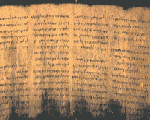




The Conference on Facilitating the Entry into Force of the Comprehensive Nuclear-Test Ban Treaty was held in Vienna, Austria from 6 October 1999 to 8 October 1999. The conference must be convened pursuant to Article XIV, Paragraph 3 of the Treaty that stipulates if the CTBT has not entered into force three years after its opening for signatures (24 September 1996), the Depository will hold a conference to determine the extent to which efforts have been made to bring the treaty into force and programs could facilitate the treaty's entry into force. On 6 October 1999 the conference elected His Excellency Mr. Masahiko Koumura, former Minster of Foreigin Affairs of Japan, as its President. The conference continued to urge the entry into force of the CTBT, the importance of the Treaty in nuclear disarmament as a means of achieving global security and amplauded the measures taken to create an international monitoring system.
This is the first Conference on Facilitating the Entry into Force of the Comprehensive Nuclear-Test-Ban Treaty held since the Treaty opened for signatures and ratification in September of 1996. The conference approved a Final Declaration and Report of the Conference, which was adopted through consensus at the sixth plenary meeting of the on 8 October 1999.
Some of the key points of the Final Declaration was the reaffirmation in Section 2 of the "importance of a universal and internationally verifiable comprehensive test ban treaty." The Final Declaration also cited the cessation of qualitative improvement in nuclear weapons, through the prohibition of nuclear testing, as a means to achieving nuclear disarmament and nonproliferation. The Conference noted that nuclear explosions had been conducted since the opening of the CTBT for signatures and ratification. Furthermore, the conference urged the nuclear-weapons states, that have either not signed or ratified the Treaty to accelerate the signature or ratification process.
The begining of the CTBT review conference in 1999 had 154 states as signatories of the CTBT and 45 states had ratified the treaty. 41 out of the 44 Annex II states, whose signatures and ratification are required for the CTBT to be brought into force, have submitted their signature on the CTBT, but only 21 of them had ratified the treaty, as of 24 September 1999.
The Conference was attended by the following 92 states
The current list of signatories and ratifiers. Algeria, Argentina, Australia,, Austria, Azerbaijan, Bangladesh, Belarus, Belgium, Bolivia, Brazil, Brunei, Darussalam, Bulgaria, Canada, Cape Verde, Chile China, Colombia, Comoros, Costa Rica, Croatia, Cyprus, Czech Republic, Democratic Republic of the Congo, Denmark, Ecuador, Egypt, Estonia, Ethiopia, European Union statemenet delivered by Finland, France, Georgia, Germany, Greece, Guatemala, Holy See, Hungary, Iceland, Indonesia, Iran (Islamic Republic of), Ireland, Israel, Italy, Japan, Jordan, Kazakhstan, Kenya, Kuwait, Lao People's Democratic Republic, Latvia, Lesotho, Lithuania, Luxembourg, Malawi, Malaysia, Mexico, Mongolia, Morocco, Namibia, Netherlands, New Zealand, Norway, Peru, Philippines, Polan, Portugal, Republic of Korea, Romania, Russian FEderation, Sao Tome and Principe, Singapore, Slovakia, Slovenia, South Africa, Spain, Sri Lanka, Sweden, Tunisia, Turkey, Turkmenistan, Ukraine, United Arab Emirate, United Kingdom of Great Britain and Northern Ireland, United States of America, Uruguay, Uzbekistan, Venezuela, Viet Nam, Yemen and Zambia.Non-Signatories of the CTBT:
Libyan Arab Jamahiriya, Pakistan, Saudia Arabia, and ZimbabweSpecial Agencies and IGO's:
Agency for Prohibition of Nuclear Weapons in Latin American and the Caribbean, IAEA, and the European Commission